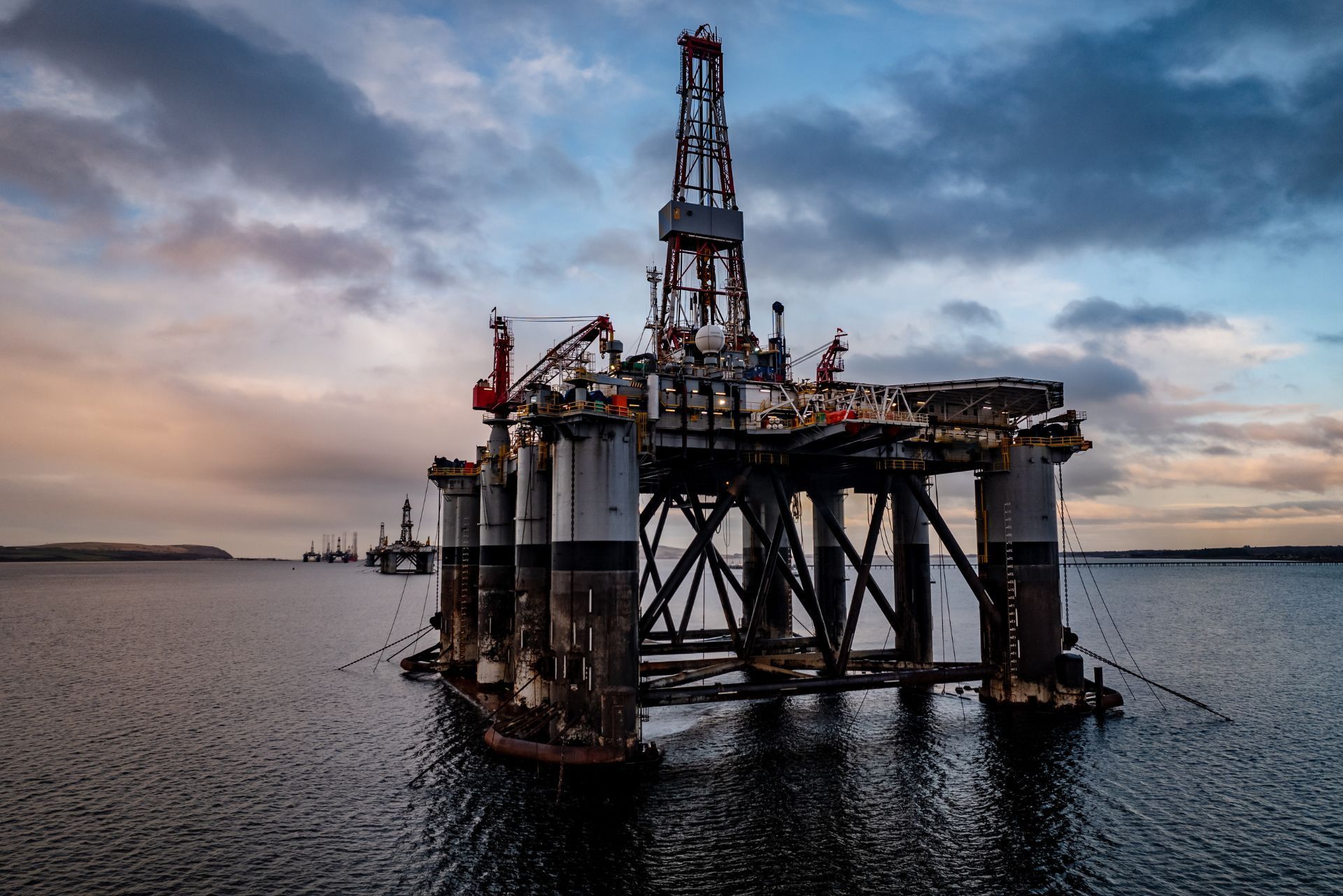Top 3 Recommended Policies

The oil exploration industry operates in a high-risk environment where operational hazards, environmental concerns, and market volatility intersect. Protecting assets and managing risks through comprehensive insurance coverage is essential for companies engaged in oil exploration and production. This article delves into the complexities of oil exploration business insurance, highlighting current challenges, emerging trends, and key considerations to help industry stakeholders navigate this critical aspect of their operations.
Understanding the Rising Costs and Coverage Challenges
Over the past decade, oil and gas companies have witnessed a significant surge in insurance premiums, especially in auto insurance claims settlements, which have escalated from approximately $50,000 to between $500,000 and $1 million. This dramatic increase reflects the growing complexity and severity of claims within the sector. The rising costs are compounded by insurers imposing stricter coverage limitations, making it increasingly difficult for companies to secure comprehensive protection at reasonable rates.
One of the primary drivers behind these challenges is the heightened environmental risk associated with oil exploration activities. According to Loren Henry, Vice President of Jencap’s Environmental & Energy Practice, environmental liabilities have become more difficult and expensive to insure. Insurers are responding by excluding pollution coverage from standard policies and shifting it to Excess and Surplus Lines markets, which often come with higher premiums and reduced availability. This shift creates coverage gaps that companies must carefully address to avoid unexpected liabilities.
Moreover, the evolving regulatory landscape is also contributing to the rising costs and complexities in securing insurance. As governments increasingly impose stricter regulations aimed at reducing carbon emissions and protecting natural resources, oil and gas companies find themselves navigating a web of compliance requirements that can lead to more frequent claims and higher insurance costs. The need for environmental assessments and compliance audits has become an essential part of operational planning, further straining budgets and resources.
Additionally, the volatility of the oil market plays a significant role in shaping insurance premiums. Fluctuations in oil prices can lead to increased operational risks, making insurers more cautious in their underwriting processes. As companies grapple with the dual pressures of maintaining profitability while ensuring compliance with stringent regulations, the insurance industry continues to adapt, often at the expense of coverage comprehensiveness. For more detailed insights into these insurance challenges, the Houston
Chronicle’s report on oil and gas insurance offers an in-depth analysis of the evolving landscape.

Key Insurance Risks Facing Oil Exploration Companies
Business interruption remains one of the top concerns for companies in the oil and gas sector. The Allianz Risk Barometer 2021 survey identified business interruption, including supply chain disruptions, as the most significant risk, with 51% of respondents highlighting it as a primary worry. Interruptions can arise from a variety of sources such as equipment failure, natural disasters, geopolitical tensions, or regulatory changes, all of which can halt operations and cause substantial financial losses. The complexity of the oil supply chain means that a disruption in one area can have a cascading effect, impacting everything from extraction to transportation and refining. For instance, a hurricane impacting a drilling platform can delay production, while political unrest in a key oil-producing region can disrupt supply routes, leading to increased costs and market volatility.
Property insurance is another critical component of risk management in oil exploration. The property insurance market for the oil and gas sector was valued at USD 75 billion in 2023 and is projected to grow to USD 135 billion by 2030, reflecting a compound annual growth rate (CAGR) of 6.2%. This growth underscores the increasing recognition of the importance of protecting physical assets, including drilling rigs, pipelines, and refineries, against damage or loss. As technology advances, the integration of digital monitoring systems and predictive maintenance tools is becoming more prevalent, allowing companies to mitigate risks before they escalate into significant issues. However, the reliance on technology also introduces new vulnerabilities, such as cyber threats, which can compromise operational integrity and safety.
Despite the growing risks, the insurance market remains committed to supporting the industry. Approximately 80% of the insurance market and 53% of the reinsurance market continue to provide coverage for oil and gas production, even in the face of mounting losses attributed to climate change. This commitment is crucial for maintaining operational continuity and financial stability within the sector. Insurers are increasingly offering tailored policies that address specific risks associated with offshore drilling and exploration in environmentally sensitive areas, reflecting a shift towards more sustainable practices. Moreover, as the industry grapples with the transition to renewable energy sources, insurance providers are adapting their offerings to include coverage for hybrid operations that combine traditional oil extraction with renewable energy projects.
For a comprehensive overview of these risks and market dynamics, the
Allianz Risk Barometer provides valuable context. The report not only highlights the ongoing challenges faced by oil exploration companies but also emphasizes the importance of proactive risk management strategies. By understanding the evolving landscape of risks, companies can better prepare for future uncertainties and enhance their resilience against potential disruptions.
Technological Innovations Transforming Insurance Solutions
The integration of digital technologies such as data analytics and artificial intelligence (AI) is revolutionizing how insurers assess and manage risks in the oil exploration sector. Advanced analytics enable insurers to develop more accurate and tailored insurance products by analyzing vast datasets related to operational performance, environmental conditions, and historical claims. This data-driven approach improves risk classification and pricing models, ultimately benefiting both insurers and insured companies.
InsurTech innovations, including machine learning and sophisticated loss modeling techniques, have shown promising results in enhancing business insurance loss models. A recent study published in January 2024 demonstrated that these technologies significantly improve claims management and risk assessment, leading to more efficient and effective insurance solutions for the oil and gas industry.
By leveraging these technological advancements, oil exploration companies can gain better insights into their risk profiles and collaborate with insurers to design coverage that aligns with their specific operational needs.
Furthermore, the use of real-time monitoring systems, powered by IoT (Internet of Things) devices, allows for continuous data collection from drilling sites. This technology not only helps in predicting potential hazards but also assists insurers in adjusting policies dynamically based on the current risk landscape. For instance, if a particular drilling site experiences unexpected geological shifts, insurers can quickly reassess the risk and modify coverage terms accordingly, ensuring that both parties are adequately protected.
Additionally, blockchain technology is emerging as a game-changer in the insurance sector by enhancing transparency and trust between insurers and insured parties. Smart contracts can automate claims processing, reducing the time and resources spent on administrative tasks. This innovation not only streamlines operations but also minimizes the potential for fraud, as all transactions and agreements are securely recorded and verifiable on the blockchain. Such advancements ensure that the insurance process is not only faster but also more reliable, fostering a stronger partnership between oil exploration companies and their insurers.
More on these technological trends can be found in the recent InsurTech study.
Market Growth and Future Outlook
The global Exploration and Production (E&P) insurance market is poised for substantial growth over the coming decade. Projections indicate a compound annual growth rate (CAGR) of 15.2% from 2025 to 2032, with the market expanding from USD 13.9 billion in 2025 to an estimated USD 36.7 billion by 2032. This robust growth reflects increasing demand for specialized insurance products that address the unique risks of oil exploration and production activities.
Several factors are driving this expansion, including heightened regulatory requirements, evolving environmental standards, and the need for more sophisticated risk management strategies. Additionally, the ongoing commitment of insurers to provide coverage despite climate-related challenges ensures that the market remains viable and responsive to industry needs.
As the energy sector continues to diversify, the E&P insurance market is also adapting to include coverage for renewable energy projects. This shift is indicative of a broader trend within the insurance industry, where providers are increasingly recognizing the importance of sustainable practices. Insurers are developing tailored products that not only protect traditional oil and gas operations but also extend to wind, solar, and other renewable energy ventures, thereby broadening their risk portfolios and catering to a more environmentally conscious clientele.
Furthermore, advancements in technology are playing a crucial role in shaping the future of the E&P insurance market. The integration of data analytics, artificial intelligence, and machine learning is enabling insurers to assess risks more accurately and offer customized policies that reflect the unique circumstances of each operation. This technological evolution not only enhances underwriting processes but also improves claims management, allowing for quicker resolutions and better service for policyholders. For a detailed analysis of the market trajectory and competitive landscape, the NewsTrail report offers valuable insights.

Addressing Coverage Gaps and Strategic Considerations
One of the most pressing issues in oil exploration insurance is the emergence of coverage gaps, particularly concerning environmental risks. As insurers increasingly exclude pollution coverage from standard policies, companies must seek alternative solutions through Excess and Surplus Lines markets or specialized environmental insurance products. These gaps can expose businesses to significant financial liabilities if not properly managed. The financial implications of these exclusions can be staggering, especially in a sector where environmental regulations are becoming more stringent and public scrutiny is intensifying.
To mitigate these risks, oil exploration companies should conduct thorough insurance audits to identify potential coverage shortfalls and work closely with brokers and insurers to develop comprehensive risk transfer strategies. This approach may involve layering different types of insurance policies, purchasing additional endorsements, or investing in risk mitigation measures to reduce premiums. Companies might also consider implementing robust environmental management systems and sustainability practices, which not only help in reducing risks but can also enhance their reputation in the marketplace. By demonstrating a commitment to environmental stewardship, firms may find themselves in a better position to negotiate favorable insurance terms.
Understanding the nuances of policy language and exclusions is critical to ensuring that coverage aligns with operational realities and regulatory obligations. This knowledge empowers companies to make informed decisions about their insurance needs and to advocate effectively for the coverage they require. Furthermore, staying abreast of industry trends and regulatory changes can provide valuable insights into emerging risks and opportunities for better coverage options. Engaging in continuous education and training for key personnel on insurance matters can also enhance a company's ability to navigate this complex landscape.
Loren Henry’s expert commentary on these evolving coverage challenges provides a useful perspective and can be explored further at
Jencap Group’s insights.
Conclusion: Navigating the Complex Landscape of Oil Exploration Insurance
Insurance is an indispensable component of risk management for oil exploration businesses. The sector faces unique challenges, including rising premiums, environmental liabilities, and operational risks that require tailored insurance solutions. The growing adoption of digital technologies and InsurTech innovations offers promising avenues for improving risk assessment and claims management, while market growth projections suggest increasing availability of specialized products.
Companies must remain vigilant about emerging coverage gaps, particularly in environmental insurance, and proactively engage with insurers to secure comprehensive protection. By understanding the current landscape and leveraging technological advancements, oil exploration businesses can better safeguard their operations, support sustainable growth, and navigate the uncertainties inherent in the industry.
For ongoing updates and expert analysis on insurance trends affecting the oil and gas sector, the
Insurance Journal is a valuable resource.
Contact Us
Phone
Location
9595 Six Pines Dr, Suite 8210, The Woodlands, TX 77380

